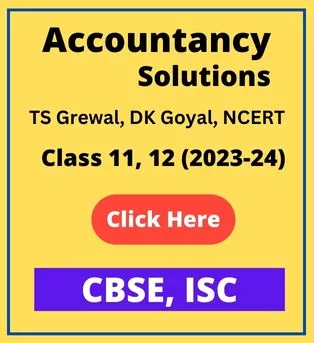[CBSE] Maths syllabus class 12 (2022-23)
Looking for syllabus of Maths class 12 CBSE Board for 2022-23 session.
We have summed up the syllabus in detail.
CBSE class 12 Mathematics syllabus for 2022-23
One Paper 80 Marks Time 3 Hours
Internal Assessment – 20 Marks
| No. | Units | Marks |
| 1 | Relations and Functions | 8 |
| 2 | Algebra | 10 |
| 3 | Calculus | 35 |
| 4 | Vectors and Three – Dimensional Geometry | 14 |
| 5 | Linear Programming | 5 |
| 6 | Probability | 08 |
| Total | 80 | |
| Internal Assessment | 20 | |
| Final Total | 100 |
Unit-I: Relations and Functions
Relations and Functions
Types of relations: reflexive, symmetric, transitive and equivalence relations. One to one and onto
functions, composite functions, inverse of a function.
Inverse Trigonometric Functions
Definition, range, domain, principal value branch. Graphs of inverse trigonometric functions
Elementary properties of inverse trigonometric functions.
Unit-II: Algebra
Matrices
Concept, notation, order, equality, types of matrices, zero and identity matrix, transpose of a matrix,
symmetric and skew symmetric matrices. Operation on matrices: Addition and multiplication and
multiplication with a scalar. Simple properties of addition, multiplication and scalar multiplication. Oncommutativity of multiplication of matrices and existence of non-zero matrices whose product is the
zero matrix (restrict to square matrices of order 2).Concept of elementary row and column
operations. Invertible matrices and proof of the uniqueness of inverse, if it exists; (Here all matrices
will have real entries).
Determinants
Determinant of a square matrix (up to 3 x 3 matrices), properties of determinants, minors, co-factors
and applications of determinants in finding the area of a triangle. Adjoint and inverse of a square
matrix. Consistency, inconsistency and number of solutions of system of linear equations by
examples, solving system of linear equations in two or three variables (having unique solution) using
inverse of a matrix.
Unit-III: Calculus
Continuity and Differentiability
Continuity and differentiability, derivative of composite functions, chain rule, derivative of inverse
trigonometric functions, derivative of implicit functions. Concept of exponential and logarithmic
functions.
Derivatives of logarithmic and exponential functions. Logarithmic differentiation, derivative of
functions expressed in parametric forms. Second order derivatives. Rolle’s and Lagrange’s Mean
Value Theorems (without proof) and their geometric interpretation.
Applications of Derivatives
Applications of derivatives: rate of change of bodies, increasing/decreasing functions, tangents and
normals, use of derivatives in approximation, maxima and minima (first derivative test motivated
geometrically and second derivative test given as a provable tool). Simple problems (that illustrate
basic principles and understanding of the subject as well as real-life situations).
Integrals
Integration as inverse process of differentiation. Integration of a variety of functions by substitution, by
partial fractions and by parts, Evaluation of simple integrals of the following types and problems
based on them.

Definite integrals as a limit of a sum, Fundamental Theorem of Calculus (without proof).Basic properties of definite integrals and evaluation of definite integrals.
Applications of the Integrals
Applications in finding the area under simple curves, especially lines, circles/ parabolas/ellipses (in
standard form only), Area between any of the two above said curves (the region should be clearly
identifiable).
Differential Equations
Definition, order and degree, general and particular solutions of a differential equation. Formation of
differential equation whose general solution is given. Solution of differential equations by method of
separation of variables, solutions of homogeneous differential equations of first order and first degree.
Solutions of linear differential equation of the type:

Unit-IV: Vectors and Three-Dimensional Geometry
Vectors
Vectors and scalars, magnitude and direction of a vector. Direction cosines and direction ratios of a vector. Types of vectors (equal, unit, zero, parallel and collinear vectors), position vector of a point, negative of a vector, components of a vector, addition of vectors, multiplication of a vector by a scalar, position vector of a point dividing a line segment in a given ratio. Definition, Geometrical Interpretation, properties and application of scalar (dot) product of vectors, vector (cross) product of vectors, scalar triple product of vectors.
Three – dimensional Geometry
Direction cosines and direction ratios of a line joining two points. Cartesian equation and vector equation of a line, coplanar and skew lines, shortest distance between two lines. Cartesian and vector equation of a plane. Angle between (i) two lines, (ii) two planes, (iii) a line and a plane. Distance of a point from a plane.
Unit-V: Linear Programming
Linear Programming
Introduction, related terminology such as constraints, objective function, optimization, different types
of linear programming (L.P.) problems, mathematical formulation of L.P. problems, graphical method
of solution for problems in two variables, feasible and infeasible regions (bounded or unbounded),
feasible and infeasible solutions, optimal feasible solutions (up to three non-trivial constraints).
Unit-VI: Probability
Probability
Conditional probability, multiplication theorem on probability, independent events, total probability,
Bayes’ theorem, Random variable and its probability distribution, mean and variance of random
variable. Binomial probability distribution.
| Internal Assessment | 20 Marks |
| Periodic Tests ( Best 2 out of 3 tests conducted) | 10 Marks |
| Mathematics Activities | 10 Marks |


